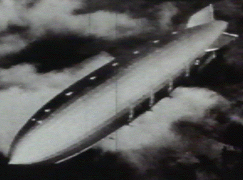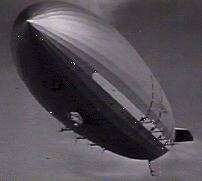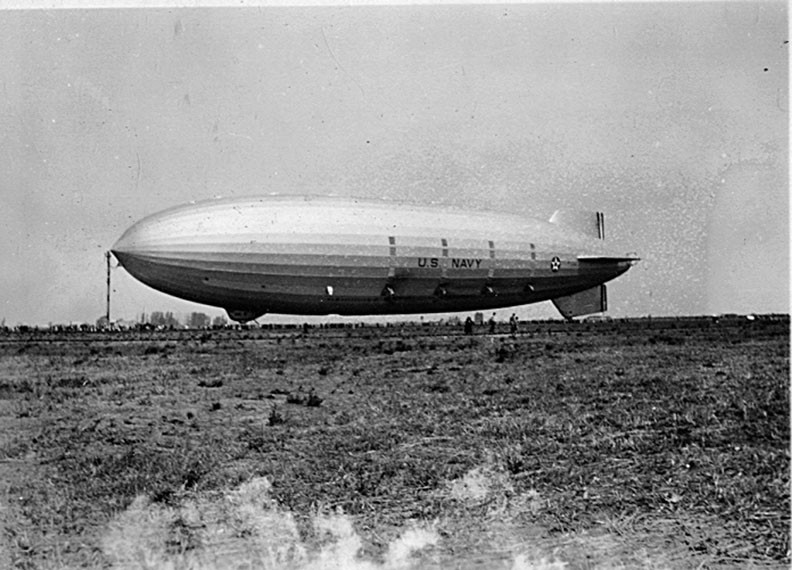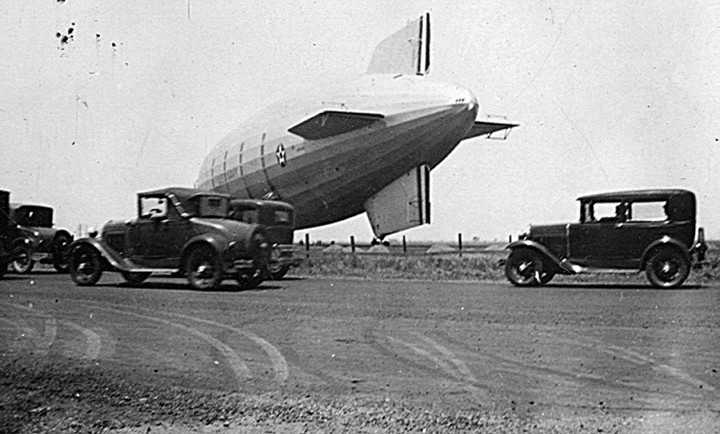"I Christen Thee Akron" declared Mrs. Herbert Hoover, wife of the American President, and pulls a cord to release 48 pigeons from a hatch in the ship's bow, one for each state of America. A quarter of a million people assembled on August 8th, 1931 for her christeing in Ohio. Measuring 239 metres (785 feet) long 325 feet wide and 211 feet high, Akron was the largest airship built at the time. Designated ZRS 4, her's would be a historic life, not for her success, but for her tragic demise.
Akron made it's first flight on September 23rd, 1931. Her first captain was Commander Charles Rosendahl, a survivor of the Shenandoah crash six years earlier. Navel fleet commanders didn;t employ Akron on the long range missions envisioned my Admiral Moffett.
Akron never was a lucky ship. On one voyage, her tail fin was smashed into the ground. On another, two line handlers were dragged away when the ship took off, and fell to their deaths, a scene captured on newsreel cameras and shown to audiences all over America. Then in the late evening of April 3rd, 1933, Akron faced her final indignity. On a flight from Lakehurst with Admiral Moffet aboard, Akron flew into a storn off the New Jersey coast. With lightening flashing everywhere and rain falling from the black clouds and wind howling through the night, the ship's new captain Frank McCord headed east out to sea to ride off the storm. It was too late however to outrun masses of power. At 12:15am, the airship started to fall at an incredible rate as the wind caught up with it. McCord dropped ballast ordered 'full ahead'. The ship leveled off at 700 feet, then rose rapidly and hit turbulant air. Once again she began to fall, this time at 14 feet per second.
McCord ordered the elevator man to increase the rate of climb and the nose of the ship went up to 25 degrees, an alarming rate of accent. The altimetre in the control cabin at this stage read as 800 feet, but in all likely hood, the low barometric pressure means the height is shown at about 300 feet higher than it really is, and in some cases 600 feet higher. With Akron's elevators in an up position, the stern dropped and smashed into the Atlantic Ocean. The 200 tonne ship hit the water at full speed and broke up. There were no lifebelts aboard and there was no time to launch the ship's one lifeboat. In all, only three out of 76 survived the tragedy. The remaining 73, including Captain McCord and Admiral Moffett perished in the freezing water.
The loss of Moffett and the Akron resulted in public outcry against American activity with airships. Only a few weeks earlier, Moffett's wife had christened the ZRS 5 Macon. Within five years, America would no longer have airships, and the world would look to Germany for the altitude. |








